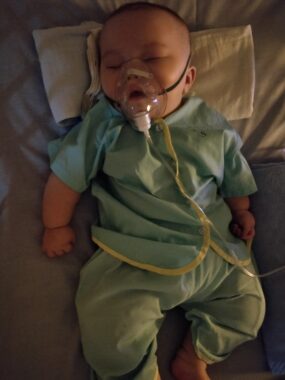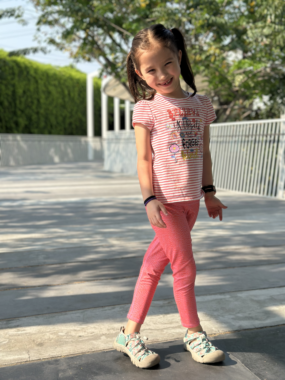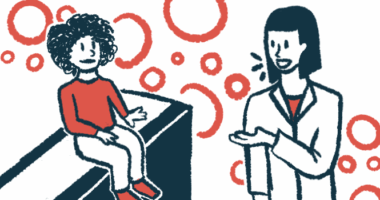The shifting perspectives we’ve experienced with AADC deficiency
What once seemed a dream is now our reality, but not all are so blessed

When our daughter, Rylae-Ann, was diagnosed with aromatic l-amino acid decarboxylase (AADC) deficiency, our world changed instantly. Like many parents receiving this life-altering news, my wife, Judy, and I were overwhelmed with questions, fears, and an urgent need for connection.
We immediately sought out other families living with the same condition, but because AADC deficiency is so rare, these families were scattered across the world.
Through video conferencing, we began forming bonds with parents who shared our struggles, our hopes, and our determination. When we organized our first AADC deficiency parent meetup, we had the incredible opportunity to meet many of these parents face to face. Their children had severe phenotypes, as did Rylae-Ann.

Rylae-Ann during one of her many hospital admissions before gene therapy. (Photo by Richard E. Poulin III)
They were unable to sit, stand, or even lift their heads. Many required feeding tubes, faced life-threatening crises, and relied on intensive, daily care. While every child’s journey was unique, we recognized many of the same battles and emotions in their stories.
AADC deficiency is not a one-size-fits-all condition. While some children experience profound motor and developmental impairments, others show milder symptoms, gaining more mobility and communication abilities. The severity is often linked to the level of enzymatic activity and genetic mutations affecting dopamine and serotonin production in the brain.
As we continued connecting with more families worldwide, we were introduced to parents whose children had milder phenotypes. These children could walk, play, and even communicate verbally — abilities we could then only dream of for Rylae-Ann.
Their parents spoke of challenges that, from our perspective, seemed like privileges: choosing schools, managing tantrums, or encouraging more independence. Yet despite their children having more abilities, they too longed for a brighter future, just as we did.
A shift in perspective

Rylae-Ann enjoys a typical Saturday morning at the park. (Photo by Richard E. Poulin III)
Everything changed for us when Rylae-Ann received gene therapy. She began gaining skills at a rate we’d never imagined — sitting, standing, running, and even expressing herself. It was a miraculous transformation, yet it also gave us a new perspective.
Suddenly, we found ourselves in a position where other parents were now looking at our daughter with the same longing we once felt. They were still waiting, still praying for their children to receive gene therapy. We understood their emotions because we’d been there. Their worries, frustrations, and heartaches mirrored the ones we’d carried for so long.
Even as we celebrate Rylae-Ann’s progress, we remain deeply connected to the families still waiting for their miracle. The memory of being on the other side — desperately hoping for even the most minor signs of progress — stays with us. Judy and I are mindful that when we set new goals for our daughter, others are still dreaming of reaching the milestones she’s already achieved.
This journey has taught us that all parents of a child with AADC deficiency, regardless of their child’s severity level, share a common hope: to give their child the best life possible. Whether a child is working on head control or learning to run, each victory is monumental. And while the challenges differ, the emotions — fear, hope, determination, and love — are universal.
A call for support and understanding
AADC deficiency exists on a spectrum, and every family’s experience is different. What we once thought was an unattainable future for our daughter is now our present, but we’ll never forget the struggles that shaped our journey. That’s why we continue to advocate, share stories, and work to ensure that every child, regardless of severity, has access to the best possible care, treatments, and opportunities.
Families at any stage of this journey know they’re not alone. We’re all connected by our love for our children and our determination to see them thrive. As we continue to push for advancements in treatments and awareness, we believe every child with AADC deficiency deserves a future filled with possibilities.
Note: AADC News is strictly a news and information website about the disease. It does not provide medical advice, diagnosis, or treatment. This content is not intended to be a substitute for professional medical advice, diagnosis, or treatment. Always seek the advice of your physician or other qualified health provider with any questions you may have regarding a medical condition. Never disregard professional medical advice or delay in seeking it because of something you have read on this website. The opinions expressed in this column are not those of AADC News or its parent company, Bionews, and are intended to spark discussion about issues pertaining to aromatic l-amino acid decarboxylase deficiency.







Leave a comment
Fill in the required fields to post. Your email address will not be published.